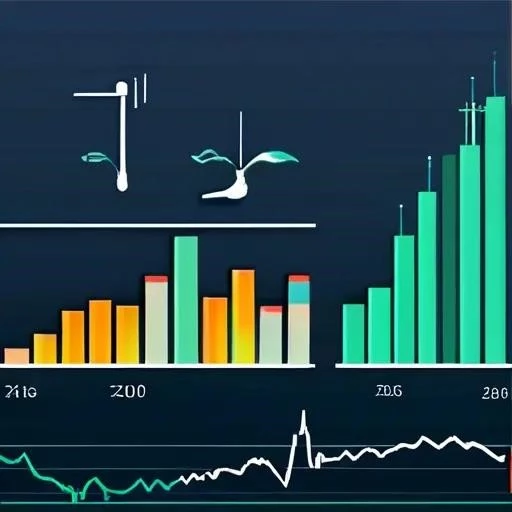human body to survive car crash
Your body’s resilience is crucial in a car crash. Proper posture and seatbelt use are key. Maintain a safe distance from the steering wheel and airbag. Strong core muscles can help absorb impact. Remember, even minor crashes can cause unseen injuries. Prioritize your safety; it’s your best defense.
Pre-Crash Preparation⁚ Seatbelts and Positioning
Before you even start your engine, understand that proper seatbelt use and positioning are your first lines of defense against serious injury in a car crash. Always buckle up – every single trip, no exceptions. Ensure the seatbelt fits snugly across your hips and chest, avoiding any loose or twisted areas. A properly adjusted seatbelt distributes impact forces more effectively, preventing your body from being thrown around violently inside the vehicle.
Adjust your driver’s seat so you maintain a comfortable distance from the steering wheel. This distance is crucial to avoid serious injuries from airbag deployment. Aim for at least 10 inches between your chest and the steering wheel. Sitting too close increases the risk of chest, facial, and head trauma during a collision;
For optimal protection, keep your feet flat on the floor. This helps maintain body stability and reduces the likelihood of leg injuries. Avoid leaning too far forward or backward, as this can compromise the seatbelt’s effectiveness.
If you’re a passenger, follow the same principles⁚ buckle up securely, ensure the seatbelt is snug, and maintain a safe distance from the dashboard and other interior components. Remember, even seemingly minor adjustments in your seating position can significantly impact your safety in the event of an accident. Taking these simple preventative measures significantly increases your chances of surviving a car crash with minimal injuries. Regularly check your seatbelts for wear and tear and replace them if necessary. Your life depends on it.
During the Impact⁚ Minimizing Injury
The moment of impact is critical. While you can’t control the crash itself, you can employ strategies to minimize the impact on your body. Brace yourself⁚ If you see a collision is imminent, tense your muscles. This isn’t about rigidly stiffening; it’s about controlled muscle engagement to better absorb the shock; Engage your core muscles – your abdomen and back – to provide support and stability. This helps protect your internal organs from jarring impacts. Keep your head and neck supported. If possible, try to maintain a neutral head position, avoiding sudden jerking movements.
Protect your vital areas⁚ Try to shield your head and chest with your arms if possible. This isn’t always feasible, but even a partial shield can reduce the severity of injuries. Your hands should be positioned to protect your face, but avoid clenching your fists as this can lead to broken bones.
Understand the airbag’s role⁚ Airbags are designed to supplement, not replace, seatbelts. Maintain a safe distance from the steering wheel to allow the airbag to deploy properly and avoid direct impact. Airbags deploy with significant force; direct contact can cause serious injury.
After the impact, remain calm and assess your situation. Avoid sudden movements until you’ve determined the extent of any injuries. Check for immediate threats, such as fire or leaking fuel, and exit the vehicle safely if possible, following emergency procedures. Remember, your immediate actions after the collision are just as crucial as your preparation beforehand. Prioritizing safety and remaining calm can save your life.
Post-Crash Actions⁚ Immediate Steps
Following a car crash, your immediate actions are paramount for your safety and well-being. First, assess your surroundings⁚ Check for immediate dangers like fire, leaking fuel, or downed power lines. If it’s safe to do so, and you are able, exit the vehicle carefully. Never attempt to move if you suspect a spinal injury; even a seemingly minor impact can cause unseen damage. If you’re trapped, remain calm and wait for emergency responders.
Once out of the vehicle, move to a safe location away from traffic. If possible, turn on hazard lights to alert other drivers. Check yourself for injuries. Even if you feel fine initially, some injuries may not be immediately apparent. Look for bleeding, broken bones, or any signs of head trauma. If you are conscious and able, assist any other passengers who may need help, providing aid to the extent of your abilities.
Contact emergency services immediately. Provide accurate information about the location of the accident, the number of people involved, and the nature of any injuries. Remain calm and answer questions clearly. Wait for emergency medical personnel to arrive and follow their instructions. Do not move severely injured individuals unless absolutely necessary, as this could exacerbate their injuries.
Document the accident⁚ If possible, and if it’s safe to do so, take photos of the damage to the vehicles and the accident scene. Collect contact information from any witnesses and note down the details of the incident, such as the time, location, and weather conditions. These details could be crucial for insurance purposes and any subsequent investigations. Remember, prioritizing safety and clear communication are vital in these critical moments.
Seeking Medical Attention⁚ When to Go
Following a car accident, even if you feel fine initially, seeking medical attention is crucial. Many injuries, especially internal ones, may not manifest immediately. Delaying treatment can lead to complications and worsen long-term outcomes. It’s always better to err on the side of caution.
You should seek immediate medical attention if you experience any of the following⁚ obvious injuries like bleeding, broken bones, or lacerations; headaches, dizziness, or loss of consciousness; neck or back pain; chest pain or difficulty breathing; abdominal pain; nausea or vomiting; blurred vision or changes in hearing; numbness or tingling in any part of your body; unusual fatigue or weakness; any significant pain that doesn’t subside. Even minor symptoms warrant a check-up, as seemingly insignificant injuries can have serious underlying causes.
Don’t hesitate to seek medical attention if you’re experiencing emotional distress or anxiety following the accident. The psychological impact of a car crash can be significant, leading to post-traumatic stress disorder (PTSD) or other mental health challenges. A medical professional can assess your mental and emotional well-being and provide appropriate support and treatment. Remember, your health is paramount. Prompt medical evaluation allows for early diagnosis, timely treatment, and a faster recovery. Don’t underestimate the importance of seeking professional care, even if you initially feel relatively unscathed.
If you’re unsure whether you need medical attention, it’s always best to consult a doctor or go to an emergency room. They can accurately assess your condition and provide the necessary care. Your health and well-being are worth prioritizing.
Long-Term Recovery⁚ Physical and Mental Well-being
Recovering from a car crash extends beyond immediate medical treatment; it’s a journey requiring sustained effort and care for both your physical and mental well-being. Physical recovery might involve physiotherapy, occupational therapy, or ongoing medical care depending on the severity of your injuries. Be patient with your body; healing takes time. Follow your doctor’s instructions meticulously, attending all scheduled appointments and diligently performing any prescribed exercises or therapies. Listen to your body and don’t push yourself too hard too soon. Rest is crucial during this phase; allow your body the time it needs to heal completely.
Mental recovery is equally important. Car accidents can trigger post-traumatic stress disorder (PTSD), anxiety, or depression. Don’t hesitate to seek professional mental health support if you’re struggling. Therapy, counseling, or support groups can provide invaluable tools and strategies for coping with the emotional aftermath of the crash. Open communication with family and friends can also provide much-needed emotional support during this challenging time. Remember, it’s perfectly acceptable to seek help; you’re not alone in this journey.
Maintaining a healthy lifestyle during recovery is crucial. A balanced diet, regular exercise (as advised by your doctor), and sufficient sleep will boost your body’s natural healing processes. Avoid excessive stress and prioritize self-care activities that promote relaxation and well-being. Engage in activities that you enjoy and that help you feel calm and centered. Remember, recovery is a marathon, not a sprint. Celebrate small victories along the way and be kind to yourself throughout the process. Your long-term health and happiness are paramount.




